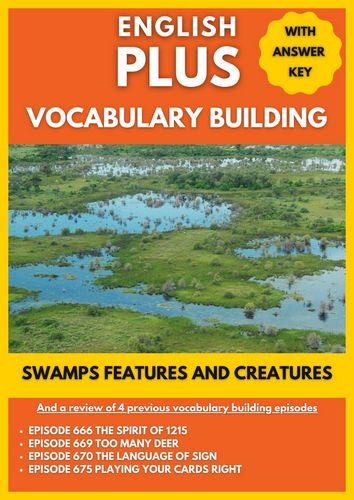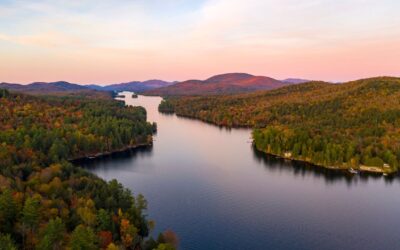Introduction
Learn about Playing Your Baseball Cards Right and how this almost childish pastime turned into a serious investment for some people, and also learn 10 new words in context.
Audio Podcast
Swamps Features and Creatures
Swamps, marshes, and bogs live in legend as dark, damp, and mysterious places. Many a fictitious monster got its start in the ooze of a swamp on a dark, misty night. In reality, swamps can be intimidating places. They often house creatures that sting, bite, and, in extreme circumstances, kill.
Swamps, or wetlands as they are currently called, have been a source of interest for centuries. One of the first recorded public works projects was the draining of the Pontine Marshes near Rome, nearly two thousand years ago. The Pontine Marshes were a notorious breeding ground for insects, and the Roman authorities wanted to remove this source of danger.
Seventeen hundred years later, this predilection to eliminate wetlands continued in the newly created United States Congress. Those who advocated such a policy convinced Congress to give 64 million acres of federal swampland to the states on the condition that the swamps be drained. One of George Washington’s early jobs was to survey the Dismal Swamp in Virginia so it could be drained.
Now scientists have begun to reexamine the role of swamps and the obsolete policies of the past. Recent research shows that marshes and swamps play a vital part in perpetuating a healthy ecosystem. For example, the coastal marshes along our shores help to purify water before it enters the water table. In addition, these marshes absorb pollutants from water as it flows to the sea. But you don’t have to live near a coast to enjoy the benefits of a swamp. Read any of Mark Twain’s stories of life during the heyday of the Mississippi River and you get a feel for what the river used to be like. Stretching back from the banks were huge swamps. When the river flooded, these swamps absorbed much of the extra water. Then people started to drain the swamps and build embankments to hold back the river. This allowed farmers and developers to uncover rich, arable land and create space to build new edifices for growing cities. But although the embankments prevented many smaller floods, the bigger floods overwhelmed the feeble earthen embankments.
Specialized swamps called bogs harbor some of the most interesting plants in North America. Situated on acid-tainted water, bogs are usually covered by a floating mat of moss. But more interesting are the unique plants that live on the surface of a bog. Three of these – the pitcher plant, sundew, and Venus’s flytrap – get essential nutriments by eating insects. The most interesting method is employed by the Venus’s-flytrap. When an insect is attracted to one of the V-shaped leaves, it brushes against triggerlike hairs, causing the leaf to clamp shut and trap the bug. After the insect is digested, the leaf reopens to await its next victim. As the modern science of ecology begins to shed new light on swamps, a new respect for their value to the environment is developing.
Interactive Activities
Flashcards
Learning
Matching
Spelling
Test
Crossword Puzzle
PDF Practice Worksheet























0 Comments